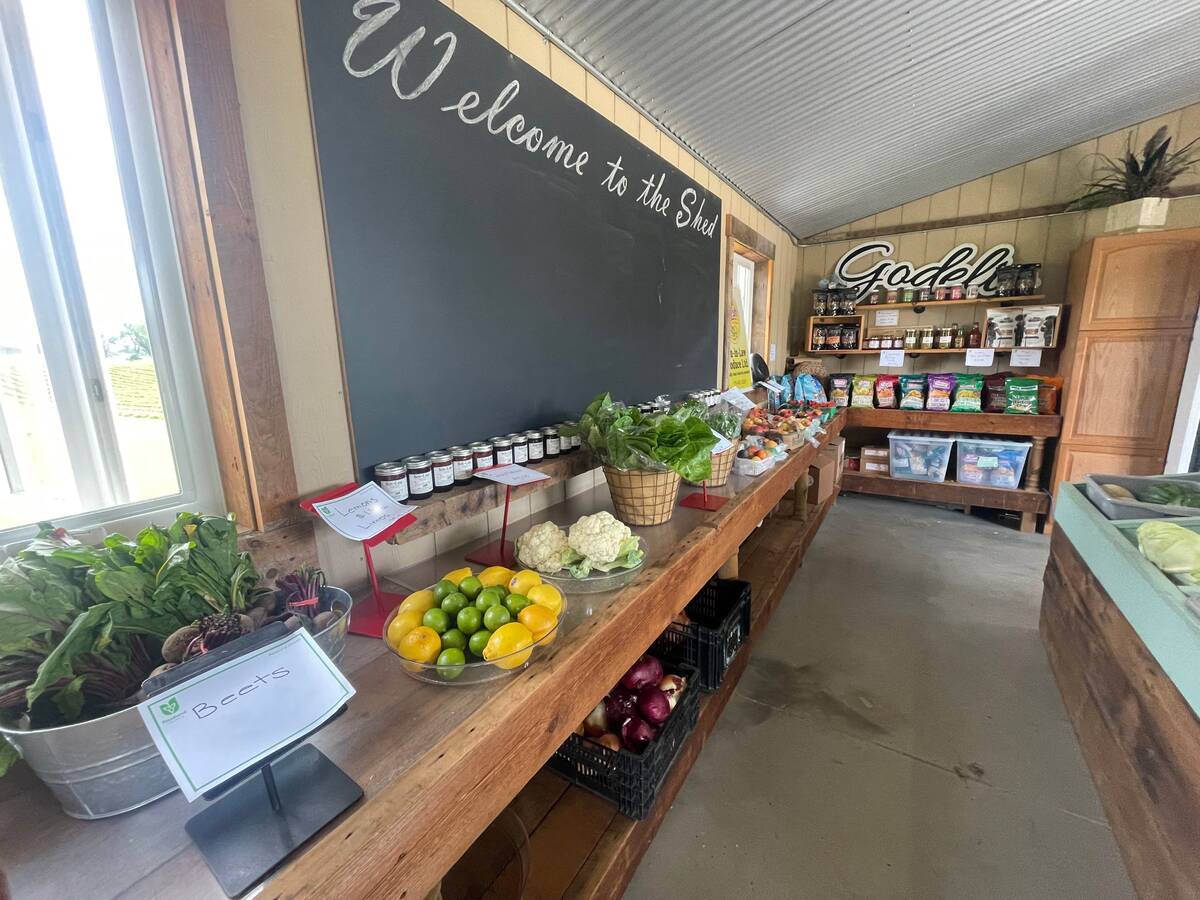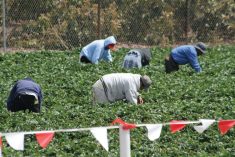Glacier FarmMedia – Canada’s immigration minister says Canadian officials are facing challenges in working with other governments to ensure farm workers get to Canada.
“There are conditions outside of Canada, in other countries that cause the offices to be closed so we’re still addressing the issues with our partners outside of Canada to improve the various processes that occur in those foreign counties,” said Marco Mendicino, minister of Immigration, Refugees and Citizenship (IRCC), during a May 22 virtual meeting of the standing committee on agriculture and agri-food.
Read Also

Ontario farms are a small business backbone but red tape delays and obstacles hinder growth
Farms are part of Ontario’s small business backbone, whether Ontario-grown livestock, grains or horticulture foods and farm products are bought on-farm, at a local market, or at the local store.
Why it matters: Foreign workers are a critical source of labour for Ontario farms, and that supply has been disrupted during COVID-19.
Mendicino said in French that a special team has been created within his ministry to approve applications in a timely fashion.
“We’ve made a lot of progress and we will still keep trying to find solutions to greet those temporary foreign workers.”
He recognized there are some “regional disparities” between provinces and the rate of temporary foreign worker arrivals, but discounted a lack of co-operation between provinces and federal officials as a reason why.
Mendocino said his office is looking at how to increase the arrival rate, notably in British Columbia, but said he likes the progress being made in Ontario and Quebec, suggesting resources need to continue to flow to government officials to ensure the timely arrival of workers. No province-specific numbers on the rate of arrivals were made available.
He said his government, “will continue to consult and refine the process.”
Government officials also said they have considered introducing a trusted employer program in Canada to expedite the paperwork for some companies bringing in foreign labourers.
According to Louis Dumas, acting associate assistant deputy minister of operations in the Department of Citizenship and Immigration, there were about 3,000 fewer temporary foreign workers confirmed in March 2020 than in March 2019. In April 2019, there were roughly 11,000 temporary foreign workers compared to about 13,000 last year.
“We are tracking a little behind,” he said, later adding there have been great efforts to reduce the need for paperwork and anything else that deals with the administrative process of applications.
He, too, noted the challenge of bringing enough workers to Canada is largely one based in other countries. Mexican offices continue to move slowly or are closed, while the eastern Caribbean is just beginning to allow workers out. Trinidad and Tobago is still determining how it will process applications.
Critics continue to argue more support is needed from the federal government, despite the introduction of a pilot project and other measures to assist in the labour issue, including a $50 million fund to help employers cover the cost of mitigating impacts of the virus on their foreign workers.
Days after Mendocino’s appearance, the committee heard from Portia MacDonald-Dewhirst, executive director of the Canadian Agricultural Human Resource Council (CAHRC), that a national labour strategy is needed to ensure stability within the sector.
“The industry cannot continue to produce healthy, safe and affordable food for Canadians and for global consumers without ensuring workers are secured and in place to do their job. The Covid-19 pandemic has put a greater spotlight on this,” she said during a May 27 meeting, noting the job vacancy rate across some sectors of the industry is as high as 10 per cent.
Ken Forth, president of the Foreign Agricultural Resource Management Service (FARMS), said the news of border closures early in the pandemic was “devastating” and, “started the massive stress that still remains” on many producers.
He told the MPs roughly 8,700 workers were expected to arrive in Ontario when Canada’s border closed, bringing everything to a “standstill” until farmers were able to ensure proper measures were in place, and exemptions were granted, to allow foreign workers.
Ensuring those proper methods were in place came at a costly price, Forth testified, telling the members there has been “nobody there with us.”
He argued money to assist farmers is difficult to access because some of the programs have too many stipulations.
Forth said asparagus production in Ontario will likely drop 50 per cent, while many vegetable producers have cut back production by up to 25 per cent. Meanwhile, producers of strawberries, grapes, fruit trees and other commodities are worried they’ll have nobody to take their crop off in the coming months.
“If that kind of devastation happens on any farm, next year isn’t going to happen,” he said.
Pilot program aims to give foreign workers citizenship
Federal officials hope a new pilot program will help stabilize ongoing labour issues in certain agriculture and food sectors, while also providing citizenship to some foreign workers. But critics contend more support is needed.
“This pilot will help to ensure that farmers and processors have the much-needed skills, experience and labour so we can grow our economy and improve our living standards for all of Canada,” said Mendicino, during the May 22 virtual meeting of the standing committee on agriculture and agri-food.
The pilot is a three-year program aimed at providing a pathway to permanent residence for temporary foreign workers who already have one year of experience working in Canada.
The work must be non-seasonal and full-time in one of the eligible industries: meat product manufacturing, greenhouse production and animal production.
Up to 2,750 applicants will be admitted into the program each year, until it expires in May 2023.
The measure was in the works before the COVID-19 pandemic, largely because of calls from the meat industry to put something like it in place. The timing, given the labour challenges arising from the pandemic, is welcomed by industry stakeholders.
Already some concerns over the program are being raised, however. Critics say a provision requiring applicants to verify their level of education is costly and difficult to obtain for many applicants.
Marian Campbell-Jarvis, assistant deputy minister of IRCC, confirmed to committee members the government requires proof of education from applicants.
“With these pilots and bringing them into the country, we actually want to position them for success and ensure they can settle and establish here,” she said, suggesting this is why proof of a high school diploma is required.













